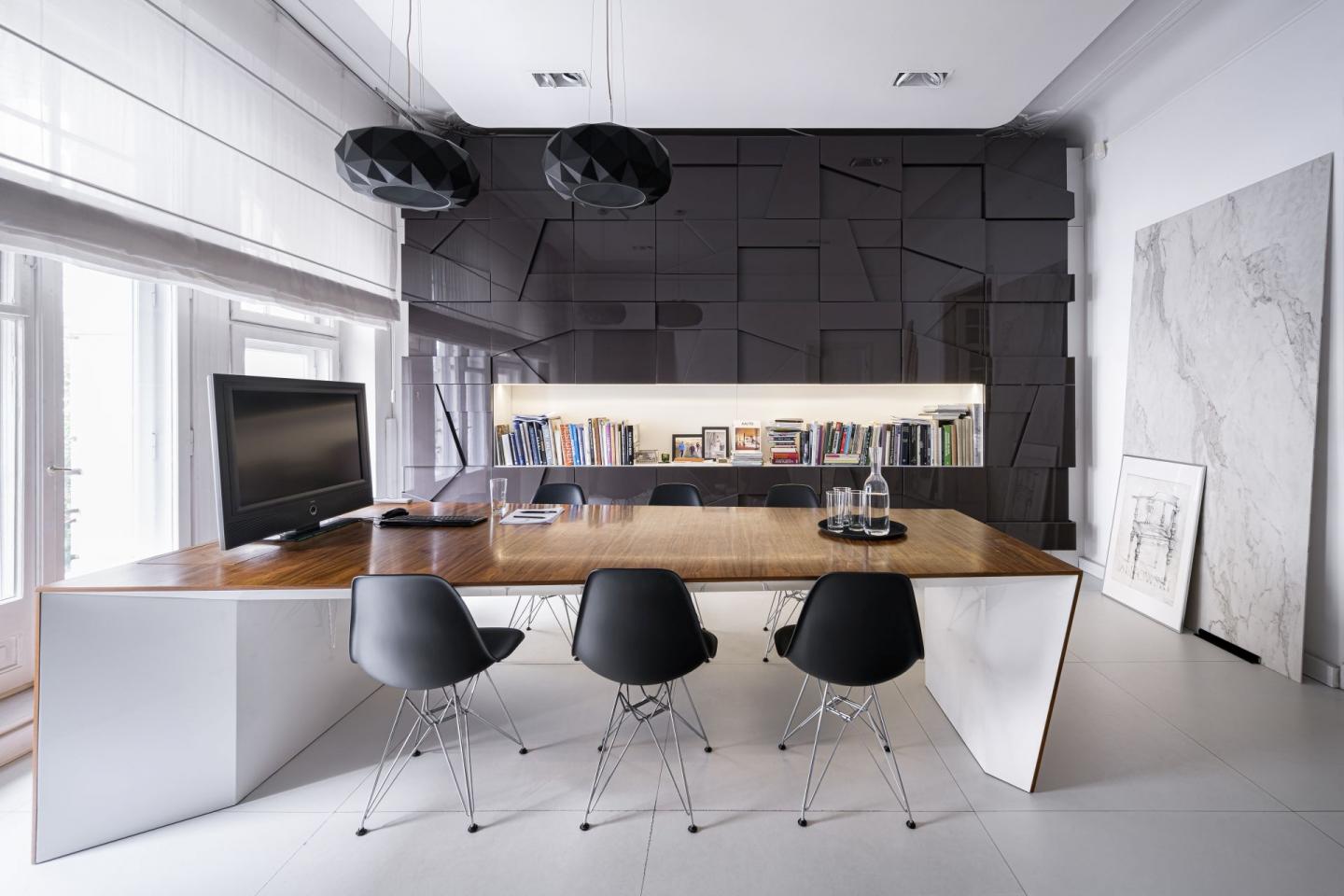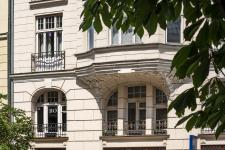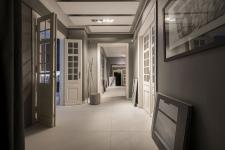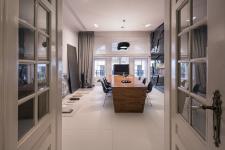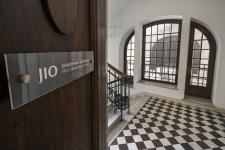A tenement house at 10 Bagatela Street in Warsaw, built during 1911-1912, is considered as one of late Art Nouveau pearls. At first it was a colonial shop owned by Józef Wilder – the first owner of the building, later it operated as a finishing school for girls founded by Elżbieta Radzicka. Krzysztof Kamil Baczyński, a Polish poet who wrote during war and perished in the Warsaw Uprising, was born in that building in 1921. Nowadays, on the first floor of the antique tenement house is located a design studio named Jankowski & Opyrchał (JIO).
A plaque on the building’s façade informs that it was built by Józef Napoleon Czerwiński and Wacław Heppen – two architects responsible for projects of the most beautiful objects in downtown Warsaw. From the outside of the tenement house is a beautiful, eye-catching and “rippling” façade, on the inside – marble staircase with balustrade decorated by leafy frieze and carefully renovated antique windows and doors.
Aleksander Jankowski and Agata Opyrchał, both architects who opened the studio JIO in 2002, found the building at 10 Bagatela Street in 2010. A former flat on the first floor met their needs for an office perfectly and an original architectural composition of the object was an extra bonus, which could not be resisted.
Despite a terrible technical condition of the elevation, staircase and apartment itself, we knew that it was what we were looking for – says Agata Opyrchał. The windows in most of the rooms face south, we have a direct contact with life of this charming street and location on the first floor gives us also a required intimacy in order to work and create.
With respect to tradition
The place needed a general renovation. Old installations were replaced by new ones, the architects also disposed of non-original element which emerged over time on the original fabric of the building. Restoring elements of the décor to their former glory, which create a historical base of the interior, was a priority. In contrast to antique doors, windows and moulding, in the studio appeared modern lamps and furniture.
The colour scheme is composed of monochromatic grey, black and white, which are sometimes breached subtly with warm wood. In this way, into a historical context of the building from the beginning of the 20th century, a modern, functional and fit for the 21st century office was integrated. Apart from a workplace for a design team, there is also a spacious conference room which serves as place for meeting clients. In the next room, which is adapted as a showroom, there are presented carefully selected finishing materials, samples, project prototypes, fabrics and also pieces of art to the clients.
DNA of the studio
None of 10 Bagatela Steet regular visitors is surprised by presence of graphics, drawings and paintings, which are quite casually exhibited in the studio. Agata Opyrchał, a graduate of Department of Drawing of Jan Matejko Academy of Fine Arts in Kraków, in spite of many obligations, still has time to create her own works. Paintings, sculptures and other forms of art are in the foreground of her design ideas.
Respect to the architectural legacy and percecption of art as an indispensable element of all design conceptions are characteristic to JIO design studio. Things, that were produced by our predecessors, are being treated by us as a base to create completely new living spaces which offer comfort meeting today’s expectations. We look long-term into the future – we want to create qualities which will withstand the passage of time. Every day, in our small business activity we want to prove that by planning complex projects, basing the development on a properly formed creative spine, we can freely but meaningfully shape our surroundings – says Aleksander Jankowski. We treat the studio in Bagatela as a second home and the best trademark of our office and project philosophy at the same time.
Photos: Łukasz Zandecki
2010
2010
More at: www.jio.pl
Agata Opyrchał, Aleksander Jankowski (JIO Design Studio)
